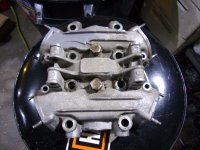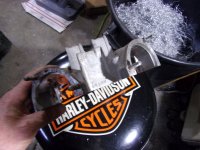I spoke to the machine shop I’m sending my cylinder head off to for valve seat cutting, diamond honing of valve guides & surfacing.
We briefly chatted about ‘lead-free conversion’. He wasn’t particularly informed about it’s necessity in regards to an early XS head but had come across it many times in the classic car world.
He said typically you need a minimum of 10mm of material to cut out to install new seat material, something he didn’t think an XS would provide, I had to agree, especially considering the head cutaway images TwoMany provided
He said that the classic car guys are very reluctant to have this service done as there are reliability issues, the new seat can come free of the combustion chamber.
He recommended lead additive in fuel. This was confounded doubly for me by the added bonus of lubricating drive train.
Good news hearing I don’t have to embark on an additional costly endeavour that could eventually turn out to be fruitless (read catastrophic).
Daniel.



